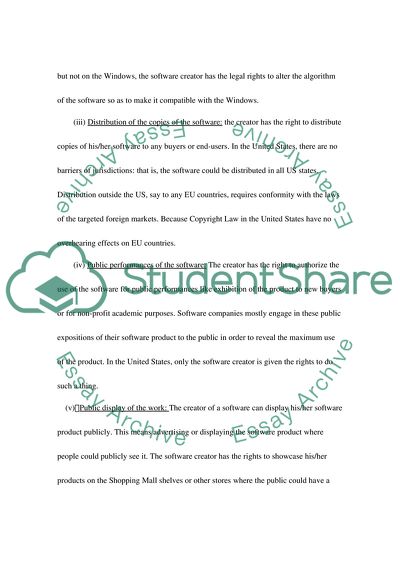Cite this document
(Nature of the Rights Case Study Example | Topics and Well Written Essays - 1750 words, n.d.)
Nature of the Rights Case Study Example | Topics and Well Written Essays - 1750 words. Retrieved from https://studentshare.org/law/1720110-law-technology-and-culture-assignment-discuss-the-nature-of-the-rights-that-the-creator-of-software-has-under-the-existing-us-copyright-act
Nature of the Rights Case Study Example | Topics and Well Written Essays - 1750 words. Retrieved from https://studentshare.org/law/1720110-law-technology-and-culture-assignment-discuss-the-nature-of-the-rights-that-the-creator-of-software-has-under-the-existing-us-copyright-act
(Nature of the Rights Case Study Example | Topics and Well Written Essays - 1750 Words)
Nature of the Rights Case Study Example | Topics and Well Written Essays - 1750 Words. https://studentshare.org/law/1720110-law-technology-and-culture-assignment-discuss-the-nature-of-the-rights-that-the-creator-of-software-has-under-the-existing-us-copyright-act.
Nature of the Rights Case Study Example | Topics and Well Written Essays - 1750 Words. https://studentshare.org/law/1720110-law-technology-and-culture-assignment-discuss-the-nature-of-the-rights-that-the-creator-of-software-has-under-the-existing-us-copyright-act.
“Nature of the Rights Case Study Example | Topics and Well Written Essays - 1750 Words”. https://studentshare.org/law/1720110-law-technology-and-culture-assignment-discuss-the-nature-of-the-rights-that-the-creator-of-software-has-under-the-existing-us-copyright-act.


